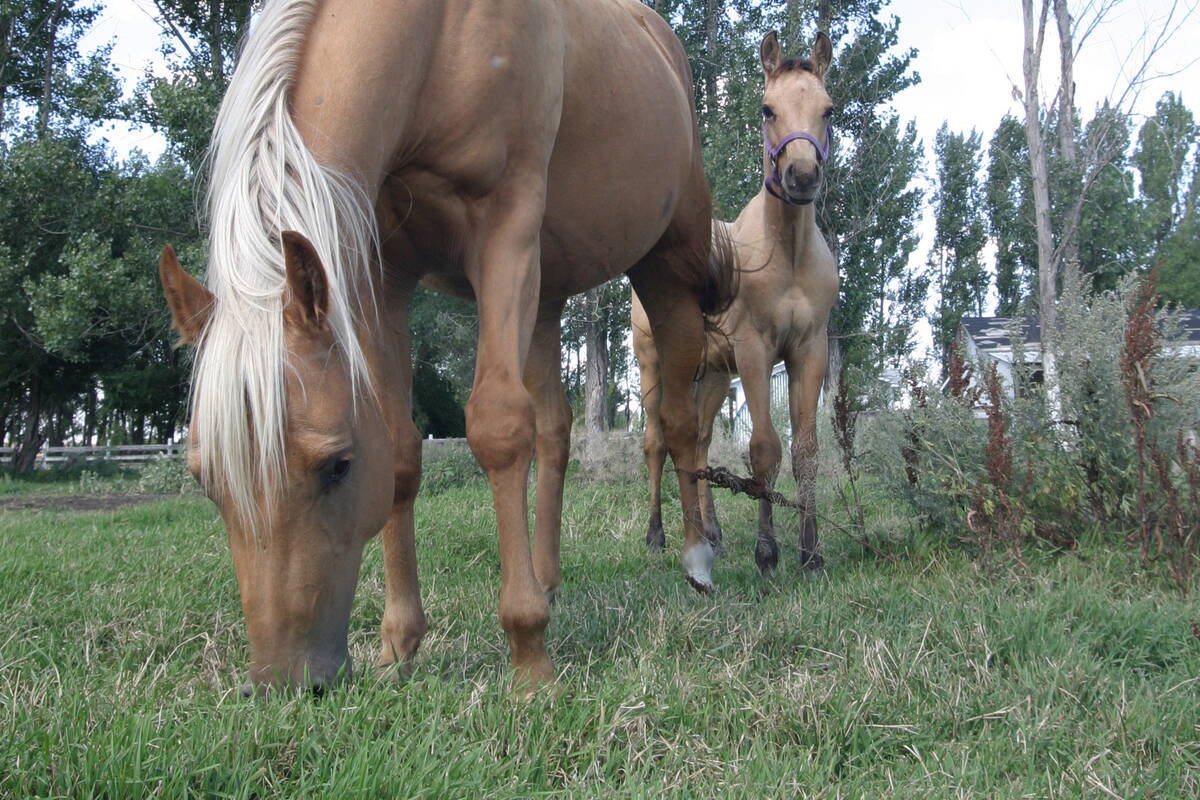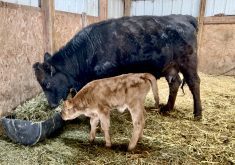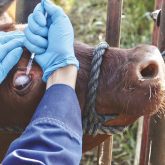There are many factors to consider when bringing in calves to feed in order to minimize BRD (bovine respiratory disease), which is still the No. 1 cause of morbidity and often mortality in our feedlots.
Knowing the history of the calves regarding weaning time, distance transported, vaccination, and health history — as well as upcoming weather conditions — will help you determine the level of risk. Each pen or group of calves needs to be independently assigned a risk category — ranging from low risk to ultra-high risk — in order to determine how they should be handled.
Read Also

Ignoring growth plates sabotages young horse development
Young horse training plans and workloads must match their skeletal development. Failing to plan around growth plates can create lifelong physical problems.
The overall goal is to prevent a disease outbreak and high death loss by implementing management changes so you will get top performance from your calves.
If we can determine the risk level ahead of time, that gives us a hand up in battling the respiratory and other pathogens we know the calves may be exposed to. The final step is making the economic calculation of preventive cost in terms of vaccines, labour, or metaphylactic (mass medication) antibiotics versus treatment and potentially higher death loss. As with most things in farming, this is a gamble and, of course, there are always unknowns that can blindside us.
In bringing in calves or, for that matter, feeding your own calves, there are many factors which increase risk and we need to manage or handle these as best as we can. Try and ask yourself the question ahead of time: ‘What is the risk level of this group of calves for developing respiratory disease and is there any management changes I need to make to mitigate or minimize this risk?’
Calves at high risk of developing BRD are generally considered to be those presenting with one or more of these points:
- They have been commingled because they came from an auction market or were mixed at home. Once a group has settled, avoid adding in more calves. Filling a pen with animals from as minimal a number of original owners as possible is better.
- Extended transport times where calves become stressed and dehydrated. Loading and unloading create the highest level of stress. In my opinion, when calves are transported huge distances — such as from another province — it tips them into the ultra-high-risk category. The more local we can source cattle, the better. However, that is often not possible as very often calves are raised and fed in two totally different areas of the country. In that case, think of using electrolytes solutions (such as DeStress) before transporting long distances.
- Bad weather or wide temperature swings can create severe stress. Watching the weather channel may help, but you need to buy when you can. The farther the distance travelled, the more likely these temperature fluctuations are going to happen.
- The on-arrival procedures (such as castration, dehorning, and branding) all have their stressors. The cattle industry is always under scrutiny from an animal welfare perspective for these procedures and in the majority of cases, castration is done way ahead of weaning. Polled bulls are eliminating horns or the calves are dehorned early while dehorning in the feedlot these days generally involves tipping the few horns that are left. If financial institutions, feeder associations, and grazing reserves did not require branding, there would be little done anymore. If you need to brand, minimize size and number of characters as much as possible. Better analgesics (painkillers) and anti-inflammatory drugs are being commonly administered, and that will help minimize stress in these painful situations.
- Calves recently weaned with no or a poor (unknown) vaccination history. The old preconditioned programs where calves have already been weaned a month is ideal. The more protection from respiratory pathogens, the better. This would include the viral as well as the bacterial components of the BRD complex. Don’t forget the clostridials and histophilus in your vaccination protocols.
- Lightweight calves or nutritionally compromised or parasitized — internal parasites suppress the immune system — may also carry an additional level of risk. For me, calves under 400 pounds would be considered ultra-high risk. For the four- to five-weight calves high risk and above 600 pounds, it depends on the other categories above as to how their risk was assessed. Veterinarians will vary in their opinions here.
If calves fall into any one of the above categories they are considered high risk. Low risk are essentially your own calves — pre-immunized and weaned at home into a situation where they know where feed and water are. Weaning in older, heavier calves and weaning in good weather with either fenceline or some other type of soft weaning is considered low risk. It is ideal to remove the cows from the calves and that they are used to the ration they will be fed. Even in these situations, pulls for respiratory disease can climb and you reach a point where treating them with antibiotics may become necessary to thwart an outbreak.
With high-risk calves then, the dilemma is what to do when you get them. Your herd veterinarian will have a protocol for what he or she believes is best and, again, it may vary pen to pen. Most would consider giving the necessary vaccinations and processing and covering with metaphylactic antibiotics. The newer macrolide antibiotics last a long time in the lungs and they are in a completely different family than our treatment antibiotics. Usually the label states for the control of BRD or to use in cattle at high risk of developing BRD.
This is where knowing the risk level of the calves coming into your feeding pen is critical. In the past, antibiotics were given in the feed but they needed to be given for a long period of time and are hard to manage in large feedlots in order to avoid residues.
The macrolide antibiotics come with a cost, so this is where the risk/benefit comes in (and labour has to be factored into the equation as well).
Our experience has shown us that by assessing the pens and using the appropriate vaccination, deworming, and metaphylactic treatment protocols, BRD can be drastically reduced. In the future, other antimicrobial treatments as well as earlier detection of BRD and even more comprehensive vaccine programs will hopefully reduce mortality and morbidity even further.
















